Why Food Sustainability Matters and 10 Things You Can Do About It
Most of the food found in the grocery store is the product of an unsustainable food system.
This food is dependent on foreign oil, is destroying soil, contaminates water, has caused disease outbreaks, and may be robbing our grandchildren of the ability to grow food at all.
It is often said that consumers hold a lot of power, but I believe that to stop being a consumer is even more powerful. Choosing not to support the industrial food system is the beginning of sustainable eating.
So what is sustainable eating and how do you do it?
Why Food Sustainability Matters and What You Can Do
The more I learn about our food system and how it came to be, the more concerned I am for our children and grandchildren.
Growing Concerns:
- Animal products are increasingly raised purely for profit, without regard to proper stewardship or health.
- We are monocropping, and the government is subsidizing it.
- Food is transported and processed using large amounts of non-renewable resources.
- Food is being genetically modified, cloned, and patented.
The problem is that we are separated from the origins of our food. So while we may realize that buying organic is important, organic is now just as industrialized as conventional foods.
You may wonder what little old you can do about all of this.
More than you think.
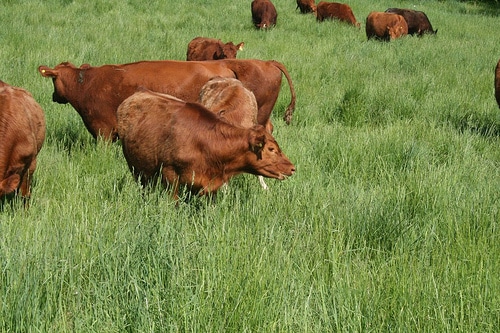
Vote With Your Food Dollars
What if every time you made a food purchase you could make a difference? Every dollar spent at a farmer’s market is one less dollar supporting the industrialized food system. Every piece of food grown in your own backyard becomes a symbol of freedom.
The moms who feed their families have more power than they know.
What Sustainable Eating Looks Like
We have all been told to “read labels” when we’re choosing our foods. That’s not bad advice, but most sustainable foods do not have labels.
Sustainable foods don’t need labels because they…
- are real foods that our bodies were designed to eat.
- are healthy for us, the soil, and the animals.
- do not harm the environment.
- are humane for both the workers and the animals.
- provide a fair wage to the farmer without the use of government subsidies.
- support the local economy instead of large corporations.
Sustainable food is what people ate for thousands of years, up until 20th century.

10 Tips For Sustainable Eating
My journey to sustainable eating hasn’t been easy, and it certainly isn’t over. Here are ten steps that we have taken to become mindful eaters.
1. Learn to Cook.
Without basic cooking knowledge, none of this is possible. Learning to cook your favorite foods using local ingredients can really make all the difference.
2. Eat Locally.
If you care about delicious food, health eating, proper stewardship of the planet, and supporting your local economy then you must source out local ingredients.
3. Eat Seasonally.
This goes hand-in-hand with eating locally. Eat root vegetables and hearty greens in the fall and winter. Eat salads, fruit, and tomatoes in the summer. Even milk and eggs are more abundant during certain times of the year.
4. Preserve the Harvest.
If you eat locally or seasonally then you’ll have to learn to preserve the harvest. Try canning, dehydrating, freezing, and lacto-fermentation. Look to Simple Bites for a helpful how-to series later in the season.

5. Grow Something… Anything.
Start with herbs or lettuce. Radishes are really fast and fairly simple. Even if you rent you can create a container garden. Once you catch the gardening bug you will just want to grow more. The Art of Simple had a great article for beginning gardeners.
6. Give Up Store Bought Convenience Foods and Make Your Own.
You can make your own taco seasoning, yogurt, chicken stock, pesto, granola, tomato sauce… the list goes on and on. If you buy it from the store, do a quick recipe search and try making it at home.
7. Buy Fair-Trade.
When you don’t know your farmer because you’re buying from a foreign country look for the words “Fair-Trade”. TransFair USA ensures that farmers are treated justly and paid fairly for their work.
8. Know The Cost of Cheap Food.
Do you ever wonder why some supermarket food is just so cheap? You may not pay for it at the cash register, but the cost to your health, the soil, and the environment are there. I rambled about the cost of a nourishing diet not once, but twice. It really is important.
9. Eat Animal Products.
I know this may be controversial, but locally grown animal products can be more sustainable than those grains and beans from the bulk bins. I have seen the “organic” bins be filled with bags from China. I know that not everyone feels the same way, but it is my personal belief that locally, biodynamically raised animal products are a better choice than monocropped grains and beans.
10. Be Willing To Give Up Convenience.
This may be the hardest part of changing the way you eat. On the other hand, it forces you to simplify your food in a way that promotes health and flavor. The simple truth is sustainable food does not outsource it’s preparation.
Eating mindfully may take a bit more effort, but the rewards – for your family and their future – are too big to pass up.
What do you think defines sustainable eating?

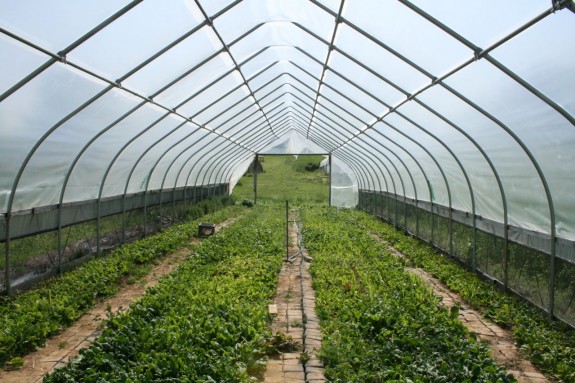

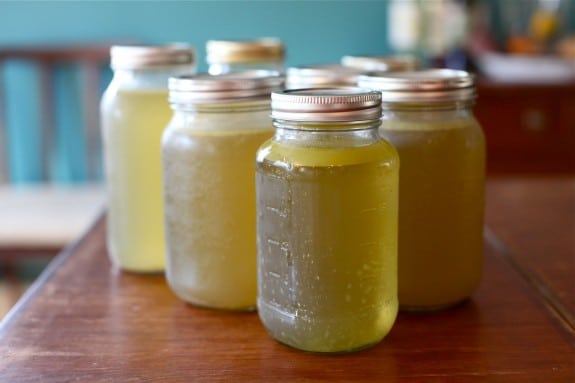
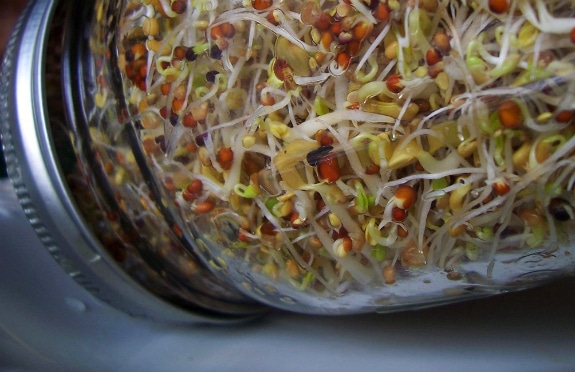
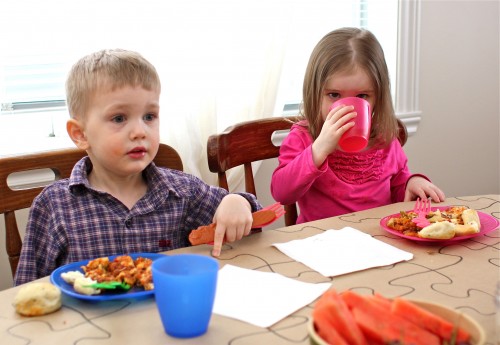
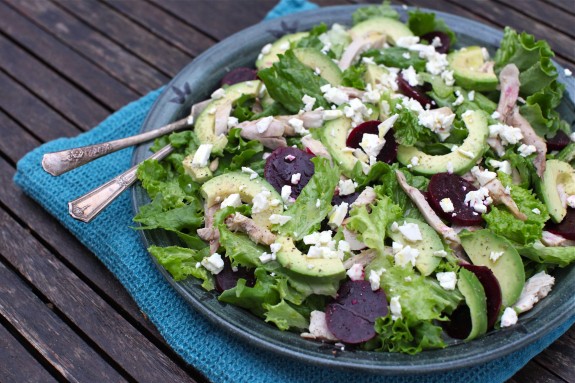
Great post! I wish they were teaching all these things in school (and in Congress!).
Maybe, one day…
Until then, that’s what weekends are for, Deanna.
wise words
Excellent post.
.-= Xan’s last blog: Sconeday: Where are you from? =-.
What an informative post! I’m printing this off to discuss with my kiddies tonight at dinner. My ten year old is starting to ask a lot of questions about food and I think this would be a good starting point for some of his questions.
Jan – That’s a great idea!
Jan, you’re such a great mom! I’ll be bringing the topic up with extended family, friends and anyone who will listen!
I agree with Deanna! Why don’t they teach these things in school? I don’t think that kids are taught near enough about the environment and other everyday issues that they will have to deal with when they grow up.
.-= Lisa’s last blog: Winners of the Green Brita Water Pitchers =-.
Lisa – I think this is one of those things that has to start at home, with our children learning from our choices and behaviors. It really is a lifestyle choice.
.-= Shannon’s last blog: Why Food Sustainability Matters and 10 Things You Can Do About It =-.
I agree that everything our children learn starts at home. We do our best to set the best examples we can by making healthier, more environmentally aware choices. My daughter is only four and she is already obsessed with recycling and following me around to make sure I turn the lights off. Before she uses bath products or eats food she even asks if there is anything in them that will hurt her. I think I’ve created an eco-monster 🙂 My concern is that when she starts school, the level of influence we have at home will diminish in light of the lack of re-enforcement of these issues in schools.
.-= Lisa’s last blog: Winners of the Green Brita Water Pitchers =-.
That’s so funny, Lisa! It sounds like you’ve built a strong foundation; I wouldn’t worry about school. Her enthusiasm will most likely rub off on her peers!
they teach it at my high school. Clark Montessori.
It’s good to know that these ideas are being taught somewhere. We need to apply this idea to all the schools and teach them about this!
Actually we learn about this in school (at least in my school in Sweden), I’m studying it right now! It’s a part of Home Economics, ways of being economical, ecological and so on.
Great article Aimee. I agree with so much of what you’ve got there but I can’t help by sigh and wonder how many working moms have the time (and energy) to “care”. One of the reasons the industrialized food system is as big and powerful as it is – is because it makes it easy for people to feed their families. No time in the garden, less time prepping food, etc. etc. etc. I know it’s not good… and awareness is first step towards change… but “sigh” it always seems to take extra effort to do things the good old simple way!
Sorry… I guess my comment is actually directed to Shannon. 😉
.-= Andrea’s last blog: a.o.k. "trial" gourmet (25) Sloppy Joes! =-.
Andrea – I believe your thoughts echo so many in our society. Like I said above, I believe it is a lifestyle choice. And I do believe it is possible for all of us, but it has to be a priority – which is where it gets hard. Choosing to be mindful in this area may require sacrifices in other areas. Sadly.
.-= Shannon’s last blog: Why Food Sustainability Matters and 10 Things You Can Do About It =-.
I whole heartidly agree with you. We’re doing little things in our home, like buying our beef locally, growing some of our own vegetables, and generally the only “prepared” food we buy is pizza… Maybe it’s that people get overwhelmed by the idea of changing EVERYTHING at once. I like your list of “ways” because it reminds busy moms/parents that every little change contributes to the bigger picture.
.-= Andrea’s last blog: a.o.k. "trial" gourmet (25) Sloppy Joes! =-.
It definitely boils down to choices. Yes, being informed is a start, but then you are even more accountable, right? 🙂
You’re completely right, Andrea, it’s all about everyday, small choices. The question is, what will people choose? Comfort & convenience or conscientious care?
Sacrifices yes, but it is important to look at what we are really sacrificing? TV time? Many, if not most of us, could afford that sacrifice.
And it can hardly be considered a sacrifice if the entire household is involved. Ours kids know the market trip and look forward to it, we cook together, they know the farmers we buy directly from. Not for one second do I feel like making sustainable food choices take away from my family. Indeed, they are a part of a our daily life.
The notion of convenience is important for households with working parents. I get that. I work full time, have part time jobs, and still do the vast majority of shopping and cooking for my family. But feeding my family quality food, teaching all of us about sustainability issues, and simply living are worth more than any episode of American Idol.
.-= Cheryl Arkison’s last blog: Best intentions =-.
Cheryl – I read somewhere that the average North American watches 5 hours of TV per day. 5 hours?! You get much more rewarding moments in the kitchen with your children than you ever could in front of the TV.
Well said, Shannon and Cheryl. How often do I hear people talking about how they have no time in the same breath as referencing the 4 (5,6,7) shows they follow weekly. !
Boils down to choices, once again.
I’m also going to add this.
It’s not about ‘finding’ or ‘having’ the time, it’s about making the time. We all have the same 24 hours. I am always asked how I ‘find’ time to cook real food, etc, but gracious, I have to consciously make time in my day for it–even if that means getting up earlier, or taking a Saturday morning to prep/plan.
Thanks for this great, simple and to-the-point post on this topic. I was especially interested to see the ‘Eat Animal Products’ tip. I actually started eating meat again after over 15 years as a vegetarian because I increasingly starting to feel that a vegetarian diet that relied on beans high in food miles and processed meat-like products was more damaging environmentally than locally-raised meat from a small farm. One of my tipping points was a research article on Amazon deforestation due to soybean production and the impact that the soybean fields were having on the local environment as well as climate patterns (particularly rain fall) in the area. Now it’s not just us that eat soy–I believe a lot is used as feed in factory farms–but it was enough to get me seriously considering some of my long-held beliefs around food and the environment.
.-= Amanda S. (Mindful Table)’s last blog: Beef, Labelling, Oil and Flowers =-.
Amanda, I am hearing about this more and more. I find it fascinating! Good for you and thanks for reading.
Amanda,
I don’t have my sources here to talk numbers, but the biggest part of the soy deforestation problem is indeed produced to feed factory farmed animals.
I haven’t been vegetarian for that long and I’m really interested in the sustainability of my food, do you have some more information on the beans?
I was a parttime veggie for a while (I didn’t cook or buy meat, fish or poultry, but I did eat it when someone else was cooking), however Jonathan Safran Foer’s book got me so disgusted that I really don’t feel like eating animals for a while… It’s about the environment, our health, our beliefs…
Somewhere in his book, he argues that, while he supported the wonderful farms he had visited, he didn’t support eating locally farmed or organic meat, because he felt it would be easier for people to say “this one time I can’t afford it” or similar things and just eat factory farmed… I think he has a point, but I still appreciate everyone who leaves the factory farmed meat behind…
I believe the key word for eating animal foods is moderation. Meat, fish, or poultry should not be the centerpiece of your dish, it’s an accompaniment. What is your opinion on that?
Joke – One of the things that I have realized over the past few years of learning about sustainable foods is that we have been taught to think very differently than generations past. In generations past sustainable living looked like growing and raising food in our own backyards. Having a garden, chickens for eggs, a cow for milk, and a pig for meat was very common. This meant that only a few items were bought from the store, and when times were too tough they relied predominantly on what they could grow and eat – which inevitably was animal products. They are nutrient dense and are foods that can be grown in your backyard – two principles that don’t always apply to monocropped beans and grains.
.-= Shannon’s last blog: Why Food Sustainability Matters and 10 Things You Can Do About It =-.
Thanks for all of the great information (and the links). This makes is seem easier to do it!
Hi – think I just lost this comment, so will try again – this is a good article! I could not agree more! I too just did an article on Industrialized Chicken if you want to check it out at http://glutenfreedelightfullydelicious.com I found your site through Heal Balance Live, it is nice to see like minded people and blogs, and I agree, if we stopped buying the chemical laden foods this could create big changes. I know not everyone is able to only buy organic, but the more people that do, the greater the impact. Thanks for your article, Ina
.-= Ina Gawne’s last blog: GLUTEN FREE PANCAKES =-.
What a tremendous, amazing article!! I’ve been on a “sustainable diet” for a couple of years now. It’s not an easy path (although it’s getting easier!) but my kids are healthier and we’ve actually saved money. Another way to support sustainable food is to find out which candidates are sustainable-friendly. Much of our food problems today started with politics (large farm subsidies, the dairy council) and we need to vote for people who support food freedom and sustainable agriculture. Also, check out Jamie Oliver’s Food Revolution, it full of hope.
Fantastic list! No. 6 Making Your Own is something that I have been feeling compelled to look into more as we’re making changes.
I think No. 10 is so key – we’re used to “instant” everything and have lost the value as a culture that food is worth any trouble or “inconvenience” especially good, delicious food that we can feel good about eating.
Great post! One I’ll be passing along to others …
.-= Kara Fleck’s last blog: Homemade Baby Food 101 for the Modern Mom – Part II =-.
Love!
FYI- the link to Simple Bites (under #2) is broken on their end. I bet people will want to research how to buy locally, so would you consider updating?
Jen
Hmm, I tried it a few times and it worked for me. Are you still unsuccessful, Jen?
Thanks for the heads up, anyway!
I loved this article so much. We do all of the things you recommend on your list, but it does require making a lifestyle change. However, you can tke baby steps to get there. Any bit of change in this direction is good, and then after a while it becomes second nature and thereby quicker.
People always tell me they can’t cook the way I do either because a) it takes too much time, or b) it is too expensive.
Cooking is so important to the equation, and it does take longer in the kitchen to cook this way in the beginning, then to just throw a bag of frozen stuff from the grocery store, which is why I am always telling my blog readers to grow their own, and freeze – same convenience, but so so much better!
Every seed planted in the back yard is a step towards true freedom.
Excellent article, Shannon. Thank you for posting it, Aimee.
Jenn said: “Every seed planted in the back yard is a step towards true freedom”.
That is such a great and true statement and, sadly, people have been colonized to “think” they are free because they can save a bunch of time by buying and serving convenient foods from the store. If one link in the supply chain were to fail, people would soon see they are in bondage to wherever they get their food, water, etc. It has truly been a blessing getting back to the land to live increasingly off-grid and self-sustaining looking to God as our source. It truly is a lifestyle choice.
Susan
.-= Susan’s last blog: David’s Digest: Lest Any Man Should Boast =-.
Thanks for the great post, Shannon. This topic is a passion of mine and I think you’re 100% right on. Regarding Andrea’s comment about finding the time to live this way – I too have some pretty strong and, yes, controversial opinions about our culture today and how we got to where we are now, including the industrial / political food system. Yet I am too often part of the system myself! It’s difficult, because it is so all-consuming in our culture, and it IS about choices. I take heart in knowing that even small changes can make a big difference – and over the years all my small changes have really added up!
Thanks Katie. I think people tend to use the word ‘finding’ rather than ‘making’.
I am forever asked how I find time to do everything in a day, bake from scratch, make stock, garden, etc…
It’s not that I find the time. Heavens, no! It’s that I MAKE the time, that is, I make choices that allow me to do what is important for my families health and our lifestyle.
Make sense? 😉
Great article! I could not agree more, and I appreciate the time you took to write this.
.-= tacy’s last blog: Book Review: Miserly Moms =-.
I’ve found moving this direction to be nourishing to our family relationships as well–that time spent in the kitchen is time spent together.
Thanks for the great post!
Jamie – So true. Thanks for commenting on that.
.-= Shannon’s last blog: Why Food Sustainability Matters and 10 Things You Can Do About It =-.
I would agree also! I love it that my 2 year old looks at cookbooks and “finds” ingredients to make food. It makes me so happy to know that he realizes that is how we get our food on the table rather than opening up a box and shoving it in the microwave. Cooking more has really increased the time we can spend together (even if it many times takes a lot more patience on my end!) He loves to be a helper. My proud little mommy moment the other day was when my mother-in-law brought us some asparagus and he said “that’s asparagus!” I was just brimming! It reminded me of a comment Jamie Oliver made on his food revolution show about how so many children can’t even identify many vegetables right from the garden or where they came from. So sad! Thanks for the great article.
This article points out so many great points about how to make a difference in the way we live. Thank you for writing this post. I’m grateful that these types of ideas are being propagated across the Internet. Hopefully it will make some people stop and think, and decide to change their habits. We do many of the things on your list, and some we are working on. But I think each and ever point made is incredibly important – and even better, possible to achieve! It does take extra time and effort, but it’s so worth it to know that I am helping myself, my family, and having a positive overall impact on others around me, the environment, and the future.
.-= Raine’s last blog: My Home Medicine Cabinet – What I Use to Remedy Ailments =-.
Yup- we are on our way. it takes work and a sacrifice of my time but we are almost there!
jana
Terrific post! I really do not want organic beans/grains from China, but I do think there are other sources: organic beans and grains are grown right here in the Red River Valley of Mn/ND, and I also buy from Azure in Oregon which has their own organic farms.
Corene – Yes. The comment on buying grains and beans was not meant to discount these foods, but to make the point that even when they are organic we still don’t know where they are truly coming from.
.-= Shannon’s last blog: Why Food Sustainability Matters and 10 Things You Can Do About It =-.
I wholeheartedly agree with point #9! I recently acquired 1/4 of a cow (how I am going to to eat all of it is beyond me) from a local farm at $2.50 a pound! It’s a screaming deal for antibiotic and corn-free meat, and it’s delicious! 🙂
After watching Food Inc, I realize more than ever that the extra $1 I spend at the farmers market is making an enormous difference. This is why I will continue to buy more and more of my foods at my local farmers market while buying 1/2 cows and pigs at farms, organic food at supermarkets/health food stores, and will grow my own garden soon.
Bravo! I applaud your statement and the determination it shows.
Hopefully others will learn from your example.
This is a wonderful very well thought out article. I hope it inspires many to return to home cooking. We all need to come together to fight the corporate take over of our food supply. My new goal is learning to forage, did you know dandelion greens are more nutrient dense than kale?
I highly recommend Michael Pollan’s books as a good start to learning about the impact of our modern diet.
AWESOME post! I’m a huge Michael Pollan fan so it is fabulous to see this!
Dehydrating is my new favorite hobby (I got my Nesco dehydrator at a tag sale) and I just started canning jams and applesauce last year and it is remarkably easy!
Thanks again for such a great post!
.-= Beth’s last blog: FYI: Barnes & Noble Free eBooks =-.
Hi Beth,
That sounds like a hobby I could easily pick up!
We’ll be having a series on canning in July. Stay tuned!
I love this discussion about what we can do to make changes in our homes towards sustainablity but I have such a hard time when the discussion moves in the direction of those who do not because of percieved laziness or refusing to make the right choices for the sake of convenience. It’s not always that easy for some people.
For example, my husband is in law school and we have a VERY limited budget. But we do the best we can which is a fair amount because I am a stay at mom of a 1 year old. I have nothing but time to figure out how to grow a container garden, line dry my clothes and make all my food from scratch.
But mother is in a very different situation. She is also a stay at home mom and even though she taught me all those skills, her time and money is even more limited than mine because she is a single mom, homeschooling 3 teens, 2 with special educational needs and a her child support is forever being challenged. She might have to get part time job too but that money is not going to be going towards organic food– unfortunately, it will be going to clothes and other basics.
So my point is some people just aren’t able to do what others can. We need to come up with ways to help them encorpoate sustainable living too, instead of judging there commitment levels.
Oops! I meant “their commitment…” not “there”!
Oh yeah… and “incorporate”. Bad spelling day!
Rhiannon,
Thanks for sharing that. You are quite right that not everyone is in the same position, so we can not all be expected to make the same choices. We are not passing judgment here, only trying to shine a light.
Thanks for reading.
I love posts like this that emphasize what we CAN do. It’s an important reminder that we don’t have to do things “all or nothing.” Even making one small change this week and another 6 months from now will add up over time. We look at our mission to be more seasonal, local, sustainable in our eating as a LONG TERM GOAL. Making our own, signing up for a CSA, planting a small container garden – we handled those last year, but have stalled a bit this year as we acclimate to new baby… and that’s okay. I want to go pick our own berries next month. Small? yes. Still worth it? Absolutely.
.-= Alissa’s last blog: What’s after Survival? =-.
Very well put, Alissa. Thanks for sharing.
Enjoy your berries and look for a post soon on how to best preserve them!
Thanks for the great post. If you haven’t read Diet for Hot Planet by Anne De Lappe, you might want to give it a read. Many of her action points overlap nicely with yours. We’ve been trying to implement sustainable strategies bit by bit in our life – interested readers can follow the ups and downs on our blog “Family Foodie Survival Guide” (http://food4five.wordpress.com). For us, the hardest part is trying to balance making our own food and convenience food – especially in the realm of snacks (critically important with one 14 1/2 year old and two 11 1/2 year olds.
.-= Liz’s last blog: Local Meat at the Wall of Beer =-.
I’m coming to the conversation a little late, but thanks to all! It is so great to know that I’m not alone in my convictions and idiosyncrasies. 🙂
About a year ago now, I decided to stop purchasing food in hard plastic. Why? Because I realized that I didn’t want to contribute to the masses of plastic clogging up our oceans. Although plastics are recyclable where I live, I didn’t and don’t really know where the plastics go once they leave my curb.
My no-hard-plastic vow has changed my food-shopping habits and has nudged me to follow sustainable tip #6: Give Up Store Bought Convenience Foods and Make Your Own. If I want foods that normally come in plastic, like yogurt, cottage cheese, hummus, pesto, salsa, etc., I need to roll up my sleeves and make it myself. I’ve had a lot of fun exploring how to make these and branching out to include other items (recent projects: kimchi, sauerkraut, red-wine vinegar). Plus I’ve realized that I don’t need to have all of them in my fridge all of the time, thus saving money in the process.
A natural progression of my no-plastic-vow is to follow sustainable tip #4: Preserve the Harvest. This year, we plan to can (in glass, of course) tomatoes and hot chiles and to dehydrate all kinds of fruit and vegetables for the first time (just got a food dehydrator through freecycle.org).
Love the article. I have drastically changed the way I eat lately, more out of concern for farmers and animals than my own health….it’s just a possible added bonus. Unfortunately, due to chronic bad health I do not have one ounce of energy to spare. So I will not be planting anything, canning anything, dehydrating anything, or cooking any more than I already do. So this makes eating sustainably in the winter very very difficult. I spose I could eat meat and potatos all winter.
I worry about the time coming when we are at the point of no return. If we don’t stop pumping chemicals onto crops which seep into the land and into our waterways all we will have left is an abundance of toxic and non-drinkable water.
Our children are the future… so its wonderful that families are spending more time together teaching them the importance of sustainable living and eating. Schools have an important part to play but if all they can teach is that it pays to save tokens from food packets of unsustainably produced foodstuff just to get something like a few gardening tools … I’m worried
I was wondering how food sustainability can benifit the food indistry aka: food service, resteronts and cafes ect., I’m a student aspiring to be a chief and I would really like to know what food sustainability could do for futcher resteronts that I hope to open up someday.
Beautiful. I’m going to begin following all of these tips. Again… Beautiful!
What a great post. Thanks Shannon for the though provoking ideas and action steps.
Is real,i like it
Yeah, “organic” anything from China is a joke.
I’m just glad that people are able to learn more and more, thanks to the Internet and being able to share all this information with each other!
In my opinion sustainability is a priority. It helps america consider their best food selections, and also helps you maintain a good eating habit that has a pure approach.
Thank you for this article. I came across it because I could not sleep and I am doing research on sustainability. I would like to start up a small youth summer program in my community, and have been wondering how can I make this a Fun, but educational project especially since I am looking at trying to get grant funded. This ideas of food sustainability has been working within my family for a few years now, and recently my husband and I started raising chickens and goats, and hope to plant a small garden this summer. we normally have always cooked or our family, mainly because we live in a rural community and there aren’t many options, but we had noticed that when we did travel out of town and had no choice but to eat out, our bodies, never really feel right afterward. We no usually pack our own food, and cook in the place we rent rather than eating out. We also have been eating meat that is raised local, and the surprising thing is our daughters have noticed a difference and no longer care to eat out or ask for “junk/fast food”
I have two major issues with your article. If you have any sources that you could share with me that show how you came to your conclusions please let me know, but it seems like most of your article is based on your personal beliefs like you mentioned in bullet #9.
Issue #1- Eat more animal products
First off, the way you phrase this title is totally misleading. If I just read the title, I’d think that the world would be more sustainable if I eat more meat. I think a better title would have been, “In my opinion, eating animal products isn’t as bad as many people think as long as it’s local.” But I would still think that’s way off. If an animal has to eat and drink to grow big enough to be consumed by us, how can you argue it takes less resources to produce that animal than if we were to just eat the food that it eats? Estimates show “on average, one acre of land of any level of fertility will be able to produce 15 to 18 times more protein from plant based sources than from animal products.” Also, animals produce emissions and plants don’t. Again, “livestock and their byproducts account for 51% of worldwide greenhouse gas emissions.” We could cut 51% of our emissions if we just stopped eating animal products! That is sustainable.
Issue #2- Factory Farms are Bad for Sustainability
I think it’s atrocious how animals are treated in factory farms but the whole point of them is to maximize production with minimal space. If you care enough about animals that they are treated better before they are killed for your dinner, then buy local meat, but I don’t think it’s better for sustainability. When animals aren’t penned into tiny cages they use up more land and are less sustainable in that sense. I get that there are emissions associated with transporting meat and vegetables and local is better in that sense, but factory farms are definitely more efficient from a land usage perspective. Even dairy cows on local farms are forcibly impregnated and their babies are removed from them at birth and sent to the veal factories. I still think that’s pretty inhumane.
I think you’re on point with bullets #1,5,6,8,10 but can’t agree with the rest of it. If you want to further research, here’s a list of sources that backs up what I said: http://www.cowspiracy.com/facts
TOTALLY agree with this comment, I was just about to write the same…
hi
its fantastic
Earning top quality sleep was not only possible, it became expected
over a nightly basis. As it is an autoimmune disease which begins
in the birth, there are numerous measures to control it,
like pancreas and islet cell transplantation, approach to artificial pancreas and gene manipulation.
The indoor playground equipment are designed for the usage in homes,
whereas outdoor playground are been set up in relaxation clubs, parks,
schools and also day care centers.
And, should you still can’t make up your brain, there is a display open to explain to you every one of the selections.
Thankyou for sharing this awesome information, it will be helpful to me